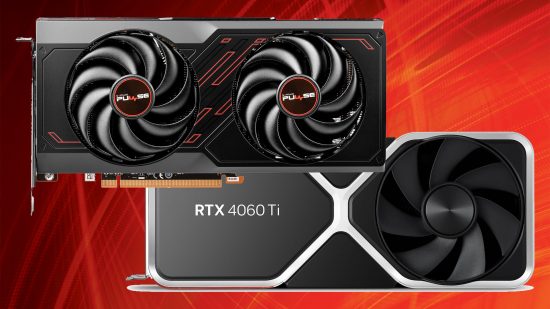Welcome, ladies and gentlemen, to the fight for affordable GPU supremacy. It’s Radeon 7600 vs RTX 4060 Ti, as the red corner faces off against the green corner to see who can land the final blow in the 1,920 x 1,080 arena.
Check below for comparisons of features, performance (ray tracing and normal rasterized games), power draw, and value. For even more detail, make sure you read our full AMD Radeon RX 7600 review and Nvidia GeForce RTX 4060 Ti review.
Despite the $130 price difference, there are some surprising similarities between these budget GPU battlers. For starters, Both graphics cards have only 8GB of VRAM attached to a comparatively narrow 128-bit memory interface. Both GPUs also try to circumvent this limitation with a 32MB pool of cache that can be quickly accessed by the GPU.
This isn’t a massive deal for AMD, as the Radeon RX 7600 is a much cheaper card and its predecessor, the AMD Radeon RX 6600 XT, has a similar memory setup. It’s an interesting choice for Nvidia, though, as the GeForce RTX 3060 Ti had a substantially wider 256-bit interface, but a much smaller 4MB pool of L2 cache. In fact, even the GeForce RTX 3060 had a 192-bit memory bus, and 12GB of memory to boot. Nvidia’s cache has some work to do. Anyway, let’s get on with the show. Fight!
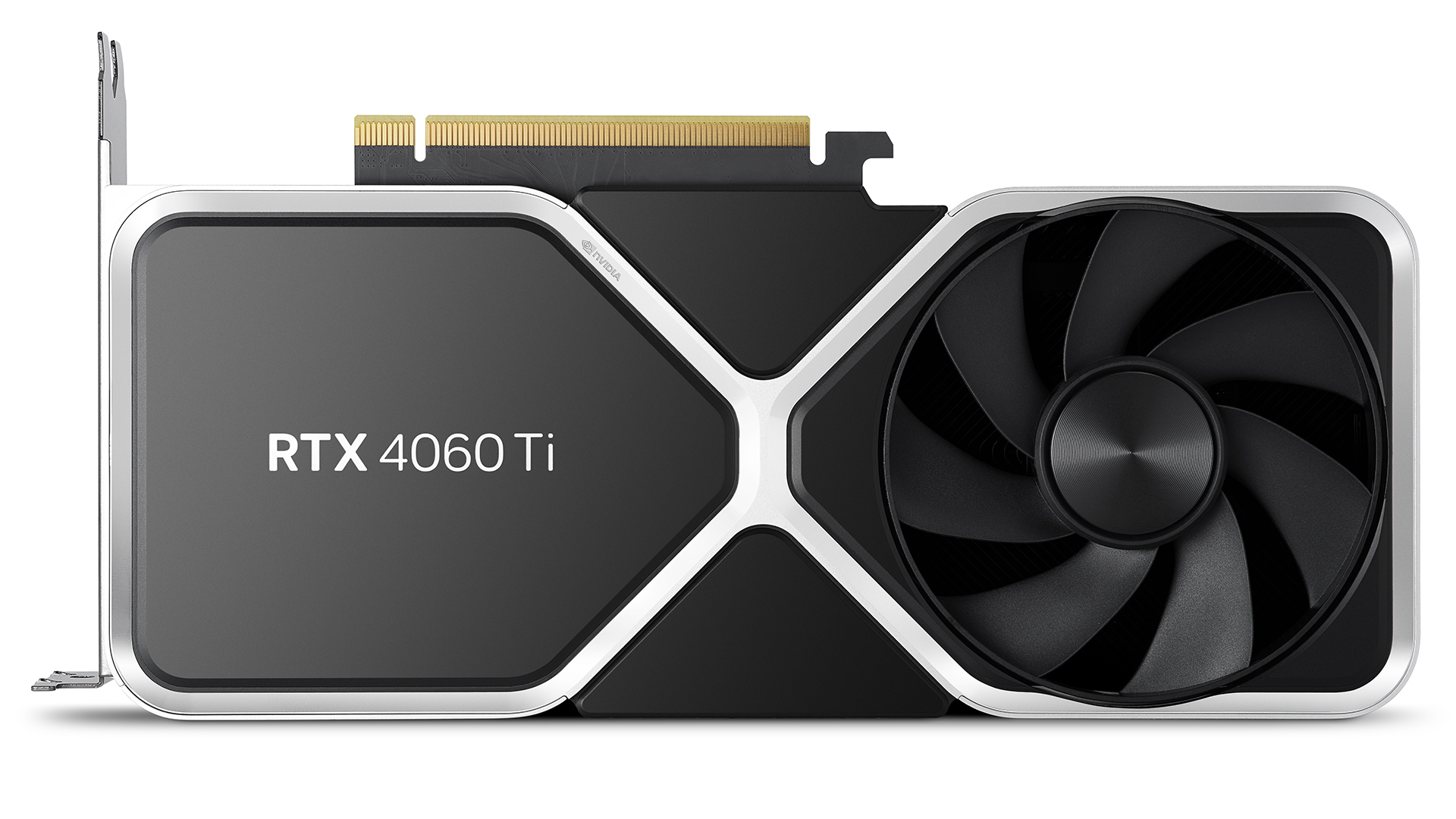
Radeon RX 7600 vs GeForce RTX 4060 Ti rasterization performance
Let’s kick off with that key performance metric – rasterization frame rates without any fancy features such as ray tracing or PhysX enabled, and without any help from FSR or DLSS. In Assassin’s Creed Valhalla with the Ultra high preset at 1,920 x 1,080, the two GPUs are surprisingly close considering the price difference – both average over 100fps with 99th percentile results that are over 70fps. You’d be quite happy with either GPU in this game, so you might as well buy the cheaper one.
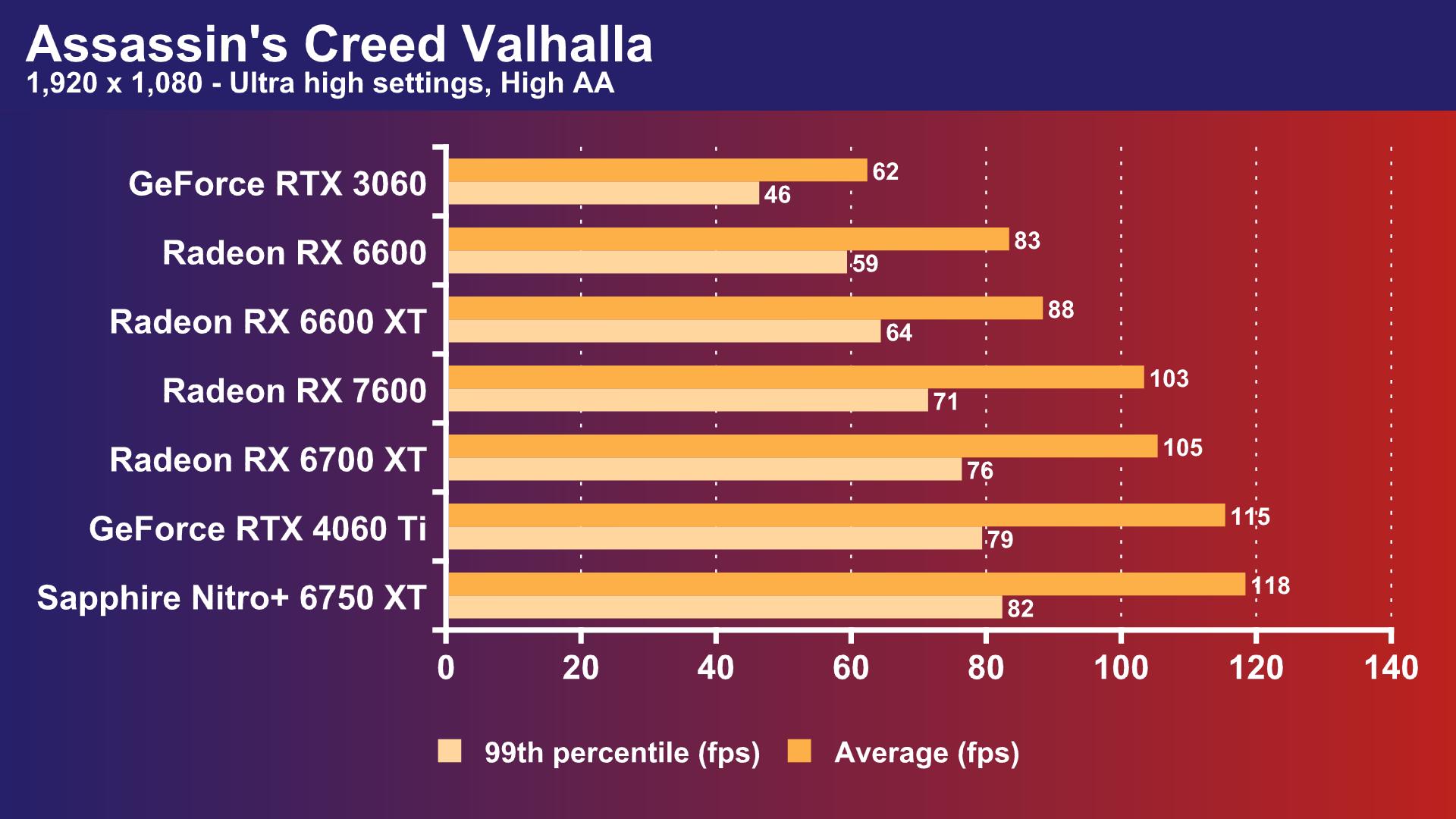
Next, let’s look at Metro Exodus with Ultra settings. The RTX 4060 Ti has a higher average frame rate, beating the Radeon RX 7600 by 12fps, but the Radeon has a slightly higher 99th percentile frame rate of 51fps. That’s interesting, as it’s when your frame rate hits its low points that you start to notice it. The RTX 4060 Ti is generally faster, but again you’d be quite happy with the Radeon RX 7600 in this game.
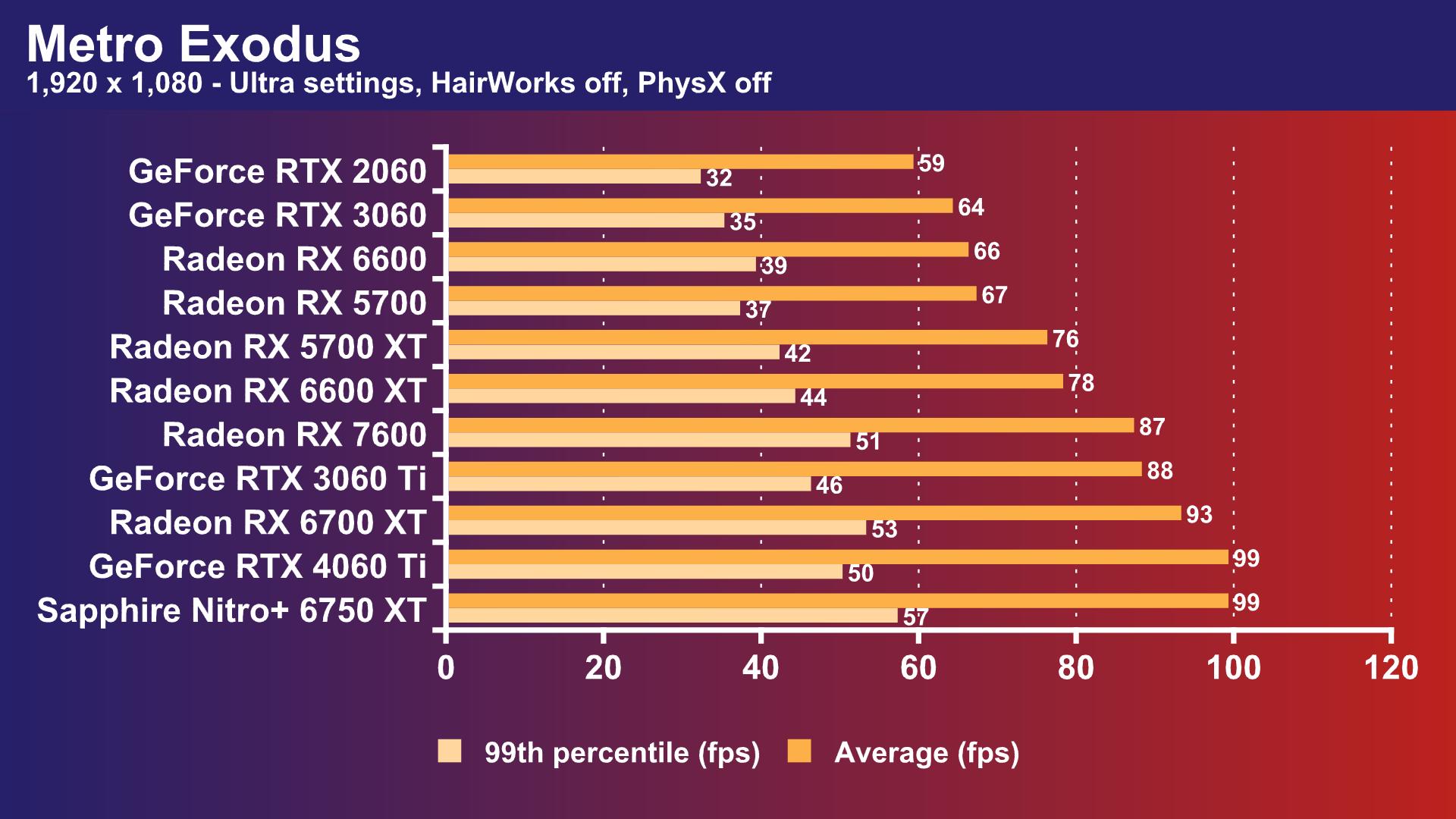
Now let’s look at Doom Eternal at Ultra Nightmare settings. This game scales really well with extra GPU power, and you can really see the RTX 4060 Ti take off. It averages massive 362fps, while the Radeon RX 7600 only averages 258fps – a huge performance difference of 40 percent.
That shows some fantastic GPU power, but bear in mind that these frame rates are already sky-high and that the 258fps average from the Radeon RX 7600 is still superb. You could quite happily sync the Radeon with a 144Hz monitor, while the GeForce could run at an even higher refresh rate.
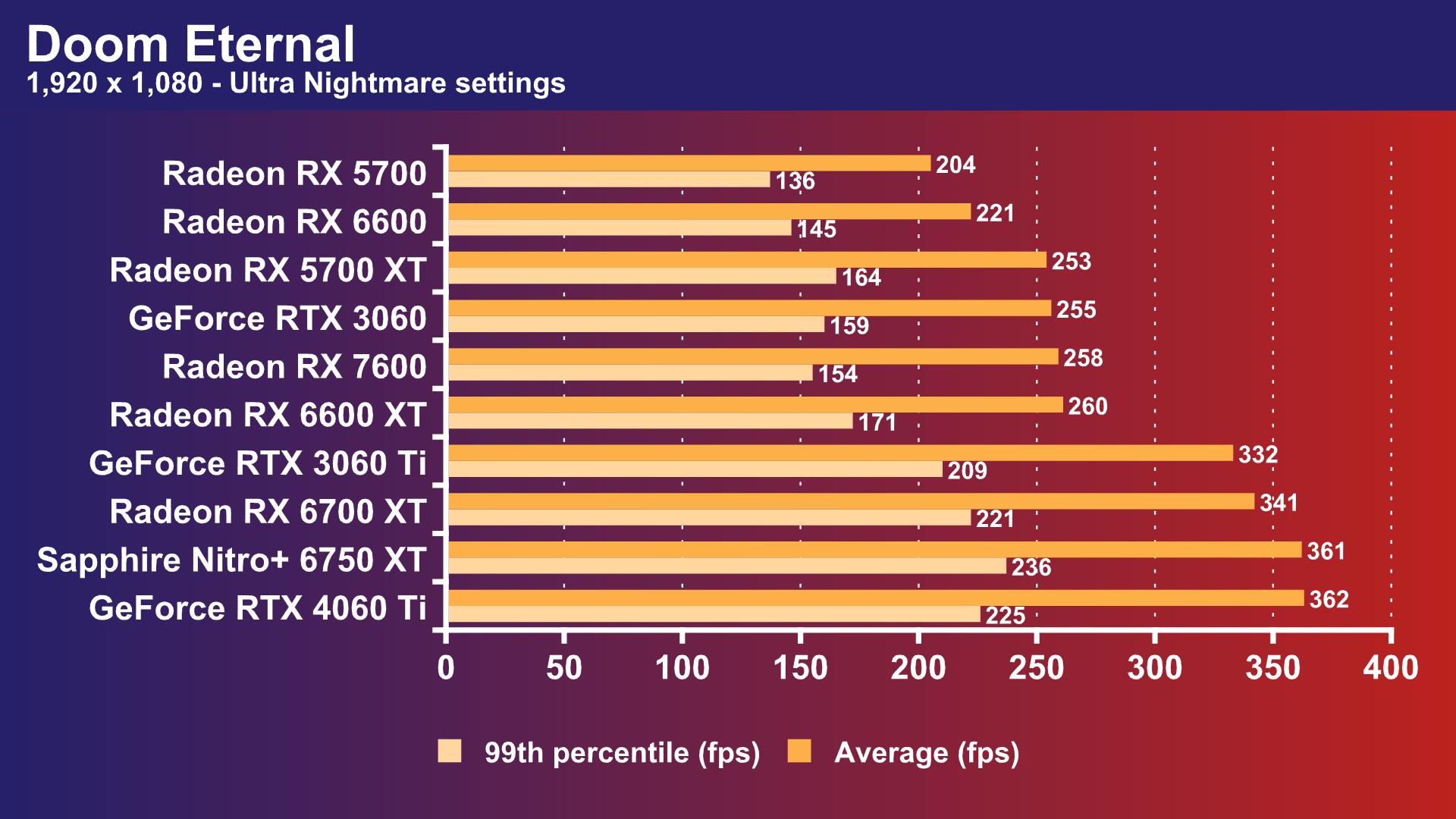
Finally, let’s look at Cyberpunk 2077, which is an interesting title as it was previously an Nvidia stronghold. However, AMD has now closed the gap, with the Radeon RX 7600 averaging 78fps with a 64fps 99th percentile result – that’s a smoothly playable result that stays above the 60fps threshold, and while the RTX 4060 Ti is quicker, the difference is tiny – again, you might as well buy the cheaper card for gaming at 1,920 x 1,080.
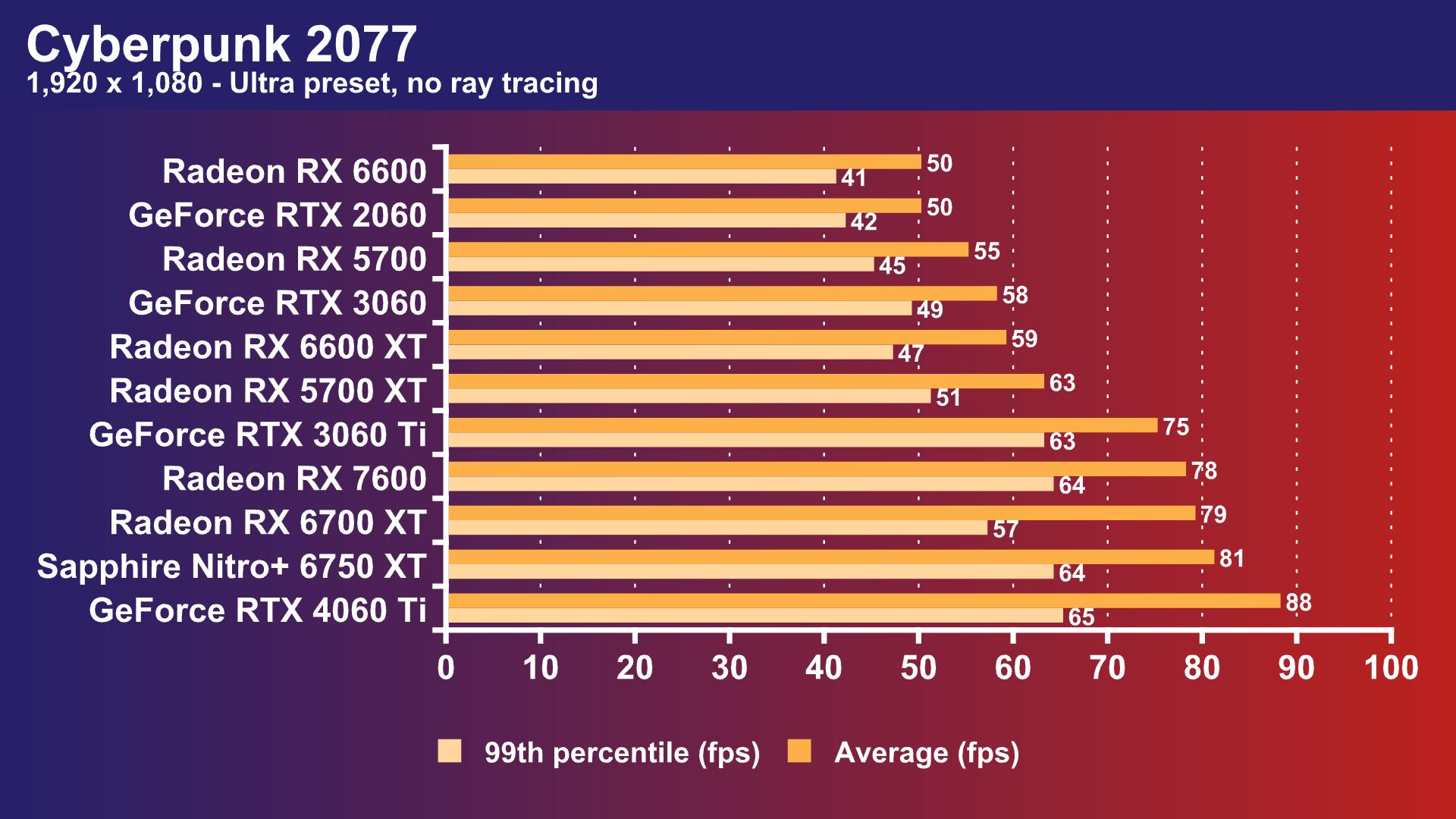
Radeon RX 7600 vs GeForce RTX 4060 Ti ray tracing performance
Now we come to the big thing in gaming graphics right now – ray tracing, with its realistic-looking lighting and brilliant reflections. AMD has previously lagged behind Nvidia here, and the Radeon RX 7600 doesn’t change that situation.
However, we were pleasantly surprised to see that the Radeon RX 7600 can handle Metro Exodus with High ray tracing, thanks to the work AMD has done with the AMD RDNA 3 architecture. It’s a long was behind the RTX 4060 Ti, but its average of 65fps is still playable, and a good 11fps in front of the Radeon RX 6600 XT.
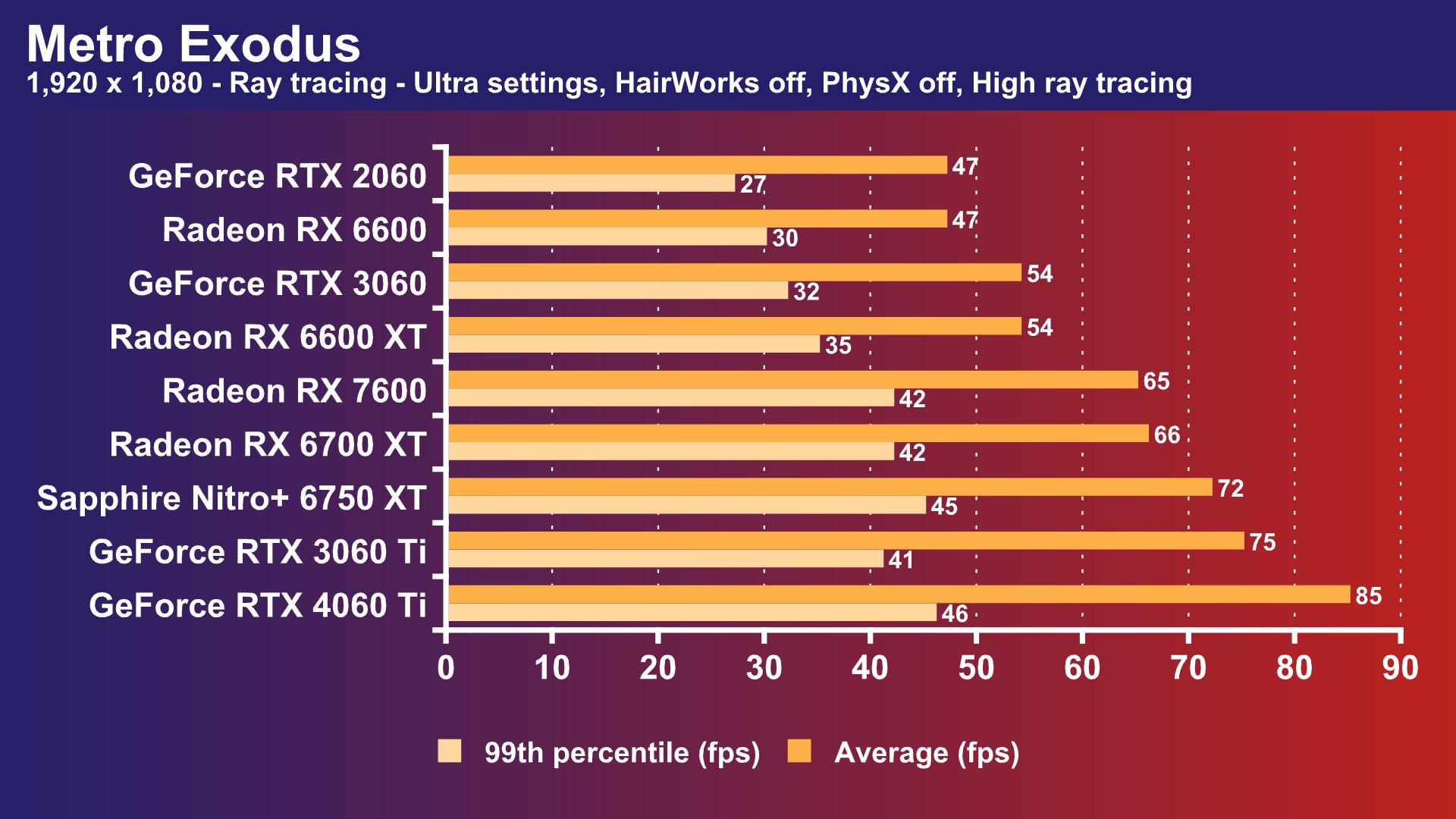
The picture is less rosy in In Cyberpunk 2077, though. Even without any help from DLSS the RTX 4060 Ti can average 53fps – that’s not far off 60fps and it’s quite playable. By comparison, the Radeon RX 7600 crawls along at 29fps, dropping down to a 26fps 99th percentile result – it’s unplayable.
That said, you can get a half-reasonable frame rate out of the Radeon RX 7600 if you enable AMD FSR. It then jumps up to a similar frame rate to the RTX 4060 Ti, although the latter can hit 84fps when you set DLSS to Balanced. In short, you can just about get the Radeon RX 7600 to run this game with ray tracing, but if you want to play demanding games with ray tracing enabled, you’d be strongly advised to buy the RTX 4060 Ti if you can afford it.
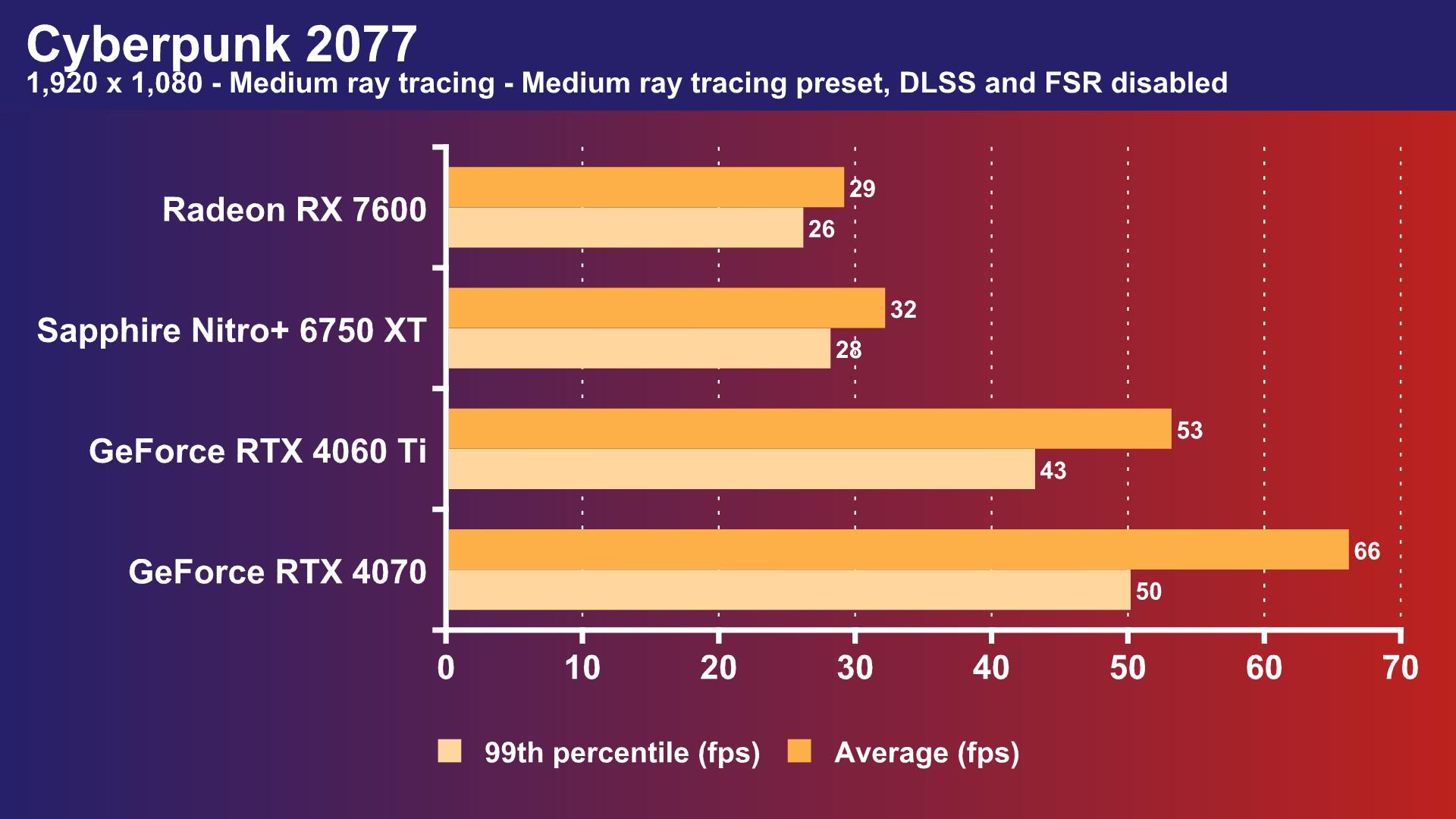 Finally, we come to a reason to buy a card with more than 8GB of VRAM, which is enabling ray tracing on Doom Eternal. At Ultra Nightmare settings, this game pushes the VRAM requirements to well over 7GB, and neither card could manage a playable frame rate here.
Finally, we come to a reason to buy a card with more than 8GB of VRAM, which is enabling ray tracing on Doom Eternal. At Ultra Nightmare settings, this game pushes the VRAM requirements to well over 7GB, and neither card could manage a playable frame rate here.
That’s not surprising for the Radeon, but it’s a disappointment with the RTX 4060 Ti. The Nvidia GeForce RTX 4070 has 12GB of VRAM and averaged 479fps in this test. If you’re looking to enable ray tracing in demanding games, the RTX 4060 Ti is significantly better than the Radeon RX 7600, but the 8GB card is also dead in the water in some respects here – that’s a $399 card that can’t even play Doom Eternal at 1080p with ray tracing. If ray tracing at 1,920 x 1,080 is a high priority for you, you’ll be better off waiting for the 16GB version of the GeForce RTX 4060 Ti.
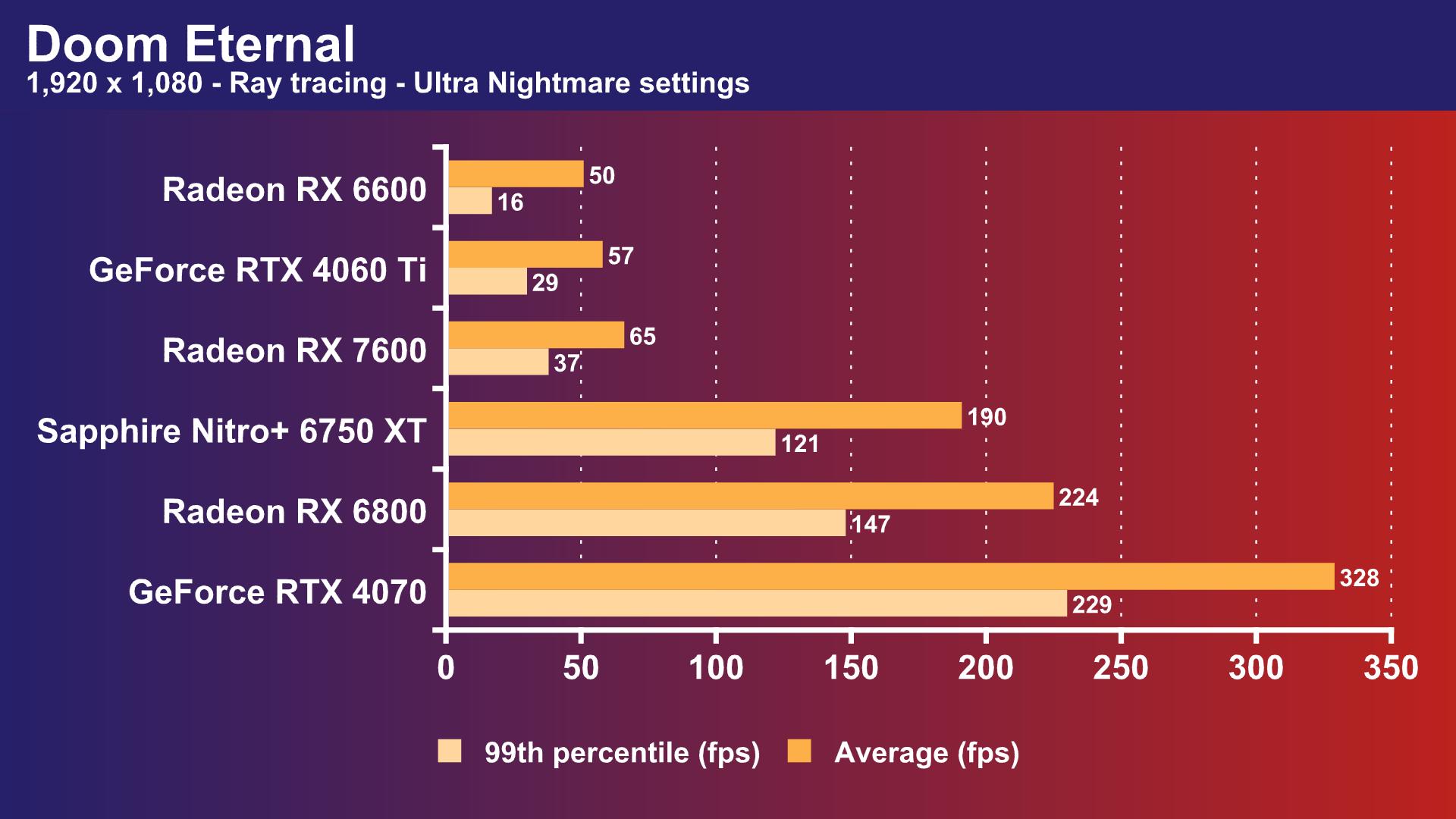
Radeon RX 7600 vs GeForce RTX 4060 Ti features
One major weapon that the GeForce RTX 4060 Ti brings to this battle is DLSS 3, the AI frame generation tech that was introduced with the Nvidia Ada architecture. With the RTX 4070, it made Cyberpunk 2077 playable even with its Overdrive ray tracing mode enabled. We were hoping that the RTX 4060 Ti could repeat this trick, but the lack of memory meant the frame rate erratically dropped to unacceptable levels.
Fine, we thought, we’ll disable Overdrive mode and run it at the Ultra ray tracing preset with DLSS 3, but again, the RTX 4060 Ti couldn’t handle it, with the frame rate dropping. All of which makes DLSS 3 seem like questionable value – after all, the RTX 4060 Ti can run Cyberpunk 2077 at the Medium ray tracing preset without DLSS 3 anyway.
Of course, there will be other scenarios where DLSS 3 will give you a substantial frame rate boost in games that don’t max out 8GB of memory, but it’s disappointing that the memory limit has so much impact here. Being able to run demanding games at top settings, while still getting a playable frame rate, is a big selling point for DLSS 3, and it’s been scuppered here by the memory limit.
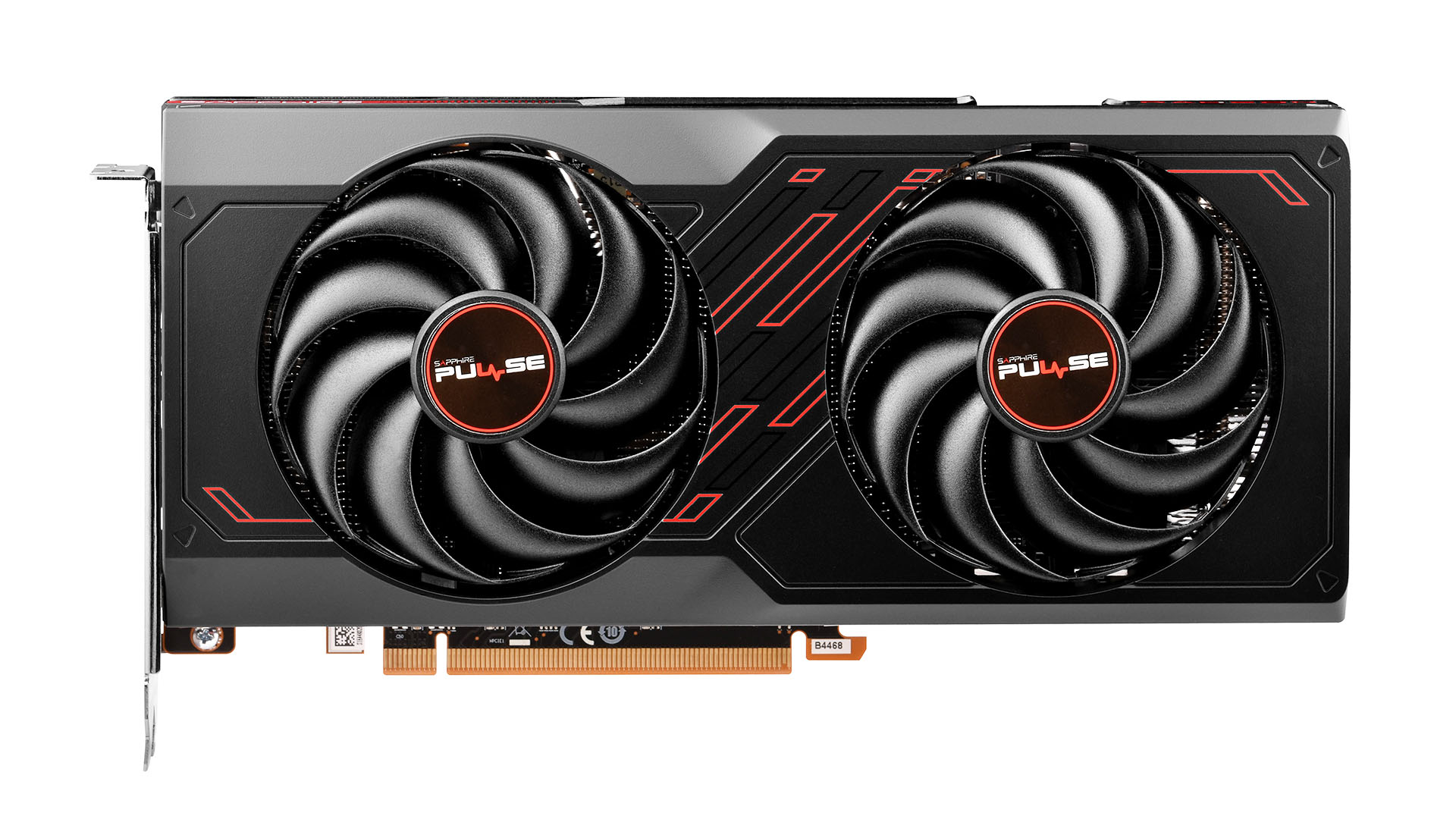
Radeon RX 7600 vs GeForce RTX 4060 Ti power draw
One area where the GeForce RTX 4060 Ti is the very clear winner is power efficiency. Despite being faster than the Radeon RX 7600 in practically every game test, the RXT 4060 Ti drew less power in our test rig. There’s only a small difference between the two GPUs when it comes to wattage, but the fact that the Nvidia GPU does this while still being faster shows Nvidia is the current king of performance per Watt.
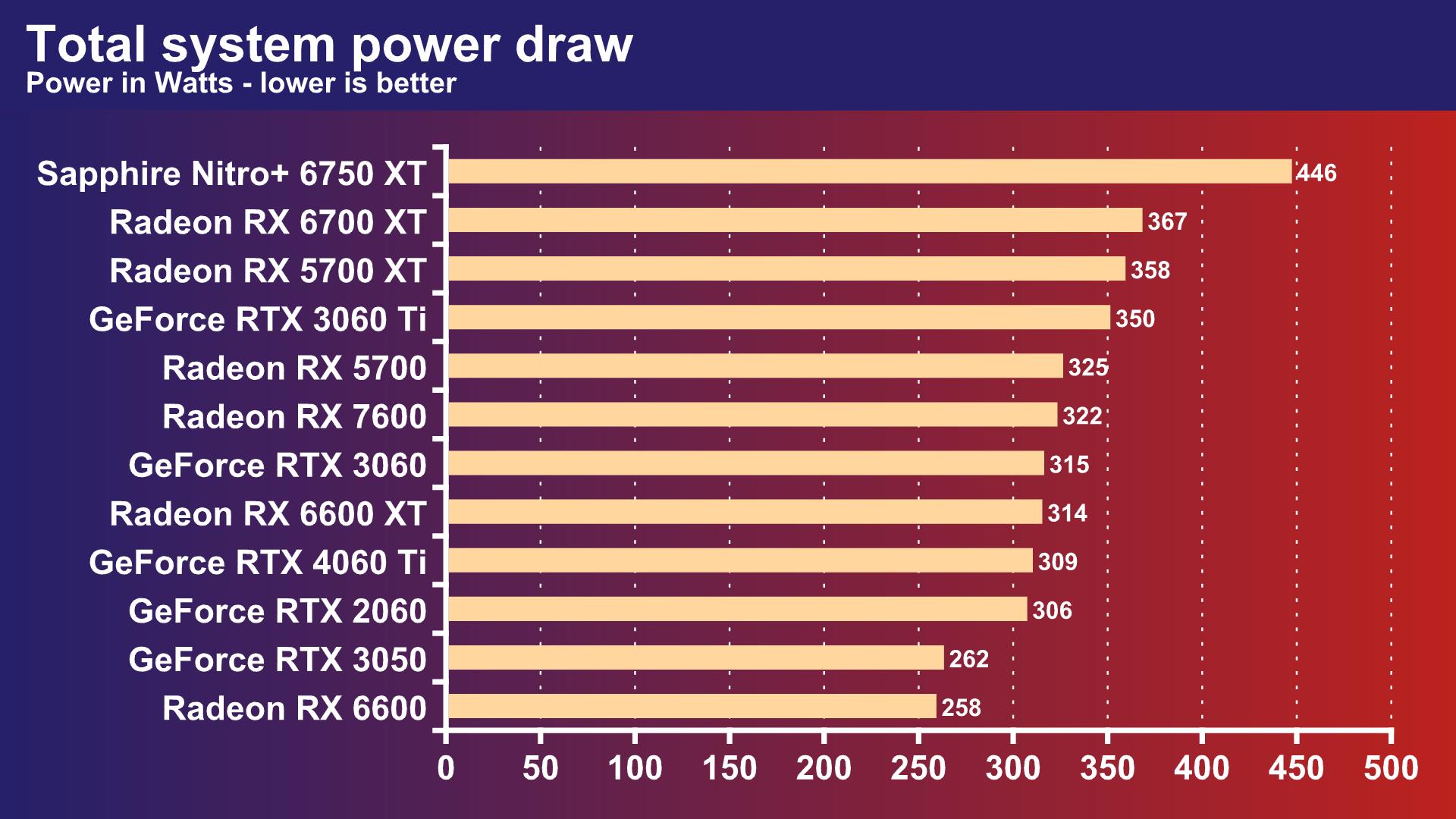
Radeon RX 7600 vs GeForce RTX 4060 Ti value
We’re finally back in the time of graphics cards not costing a very silly amount of money, which is great, and the competition between Nvidia and AMD is putting pressure on prices too. When it comes down to it, value is the key differentiator between these GPUs, and this is an area where the AMD Radeon RX 7600 has the market to itself, with no other current-gen GPUs in this price bracket.
With a price of $269, the Radeon RX 7600 offers much better value than the GeForce RTX 4060 Ti. The latter may be faster, but it still only has 8GB of VRAM, which puts a lot of the benefits of a faster GPU out of reach anyway.
Is the GeForce RTX 4060 Ti worth the extra money?
Is it worth paying an extra $130 for the RTX 4060 Ti over the Radeon RX 7600? This question would be much easier to answer if the GeForce RTX 4060 Ti came with 16GB of VRAM as standard, but we’ll have to wait until July for the 16GB version of this card, and it will also cost an extra $100.
As it is, the GeForce RTX 4060 Ti is still our preferred 1080p ray tracing GPU for under $400, but only because there’s nothing else really threatening it at the moment.
If you want to play games with ray tracing at high settings at 1,920 x 1,080, then the GeForce RTX 4060 Ti is undoubtedly better than the AMD Radeon RX 7600. However, if that’s what you really want then we’d advise holding out for the 16GB version instead, as the 8GB of VRAM really holds the RTX 4060 Ti back in these situations, even with DLSS 3 enabled.
For everyone else looking for an affordable GPU for gaming at 1,920 x 1,080, the AMD Radeon RX 7600 offers much better value for money than the GeForce RTX 4060 Ti, and still offers playable frame rates across loads of games at high settings. In short, if you’re on a tight budget but want a decent GPU, buy the Radeon RX 7600. If you want to enable ray tracing at high settings, buy the GeForce RTX 4060 Ti, but wait for the 16GB version if you can afford it.
Are you tempted to buy one of these new sub-$400 affordable gaming GPUs? Let us know your thoughts and questions on this post by joining the conversation on the Custom PC Facebook page, via Twitter, or join our Custom PC and Gaming Setup Facebook group and tap into the knowledge of our 375,000+ members. You can also find more graphics card recommendations in our best graphics card guide.
